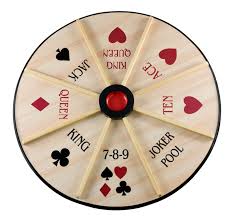Rummy Board is an adaptation of the classic rummy card game that introduces a physical board component, often involving tiles or cards placed on a board or grid. The game retains the core objective of forming sets and sequences but adds a spatial element, requiring players to strategize based on the layout and available spaces on the board. This variation can be played with two or more players and often includes elements from other games like Mahjong or Rummikub.
Basic Rules and Gameplay
While the specific rules of Rummy Board can vary depending on the version being played, the general gameplay involves the following key components:
- The Board and Tiles: Unlike traditional rummy played with cards, Rummy Board uses a set of tiles or cards that are placed on a board or grid. The board may have specific areas for different types of melds (sets and sequences), or it may simply provide a space to organize the tiles.
- Dealing the Tiles: Players start with a set number of tiles, which are typically drawn from a bag or deck. The remaining tiles form a draw pile, and players may also draw from a discard pile.
- Forming Sets and Sequences: As in traditional rummy, players aim to form valid sets (groups of tiles with the same number but different colors or suits) and sequences (consecutive tiles of the same color or suit). The goal is to place these tiles on the board in a way that maximizes points.
- Playing and Drawing Tiles: On each turn, a player can draw a tile from the draw pile or the discard pile, place tiles on the board to form sets or sequences, and discard a tile. The game may also include special tiles, such as jokers or wildcards, that can substitute for other tiles.
- Winning the Game: The game ends when a player successfully uses all their tiles to form valid sets and sequences, or when a predetermined number of points is reached. The player with the most points, based on the tiles placed on the board and any remaining tiles, is declared the winner.
Strategies for Rummy Board
Rummy Board introduces new strategic elements that differentiate it from traditional rummy. Here are some tips for excelling in the game:
- Board Awareness: Pay attention to the layout of the board and the spaces available for placing tiles. Strategically place your tiles to maximize points while minimizing the options for your opponents.
- Tile Management: Efficiently manage your tiles by planning several moves ahead. Consider which tiles you need to complete sets or sequences and which ones can be discarded without benefiting your opponents.
- Observation: Keep an eye on the tiles placed by your opponents. This can give you clues about their strategies and which tiles they might need, allowing you to block or anticipate their moves.
- Use of Special Tiles: If the game includes jokers or wildcards, use them strategically to complete difficult sets or sequences. However, be mindful of the potential points these tiles can provide and plan their use carefully.
- Balancing Risk and Reward: Decide whether to prioritize placing tiles on the board to score points or hold onto tiles to form higher-scoring combinations. Balancing these decisions is key to winning the game.
Why Rummy Board is Popular
Rummy Board offers a fresh and engaging twist on the traditional rummy game, making it a favorite among fans of both card and board games. Here are some reasons for its popularity:
- Innovative Gameplay: The addition of a board and spatial strategy introduces new layers of gameplay, offering a unique challenge compared to traditional rummy.
- Strategic Depth: The game requires players to think strategically about tile placement, tile management, and opponent observation, providing a deeper level of engagement.
- Variety and Replayability: The use of a board and varying rulesets ensures that no two games are the same, keeping the experience fresh and exciting.
- Social Interaction: Rummy Board, like many board games, is highly social, encouraging interaction and friendly competition among players.
- Accessibility: The game is easy to learn for those familiar with rummy, yet offers enough complexity to be challenging for experienced players.
Conclusion
Rummy Board is a captivating adaptation of the classic rummy game, blending elements of card games and board games to create a unique and engaging experience. Its innovative gameplay, strategic depth, and social interaction make it a popular choice among players of all ages. Whether you’re a fan of traditional rummy or looking for a new game to enjoy with friends and family, Rummy Board offers a refreshing and enjoyable twist worth exploring.




